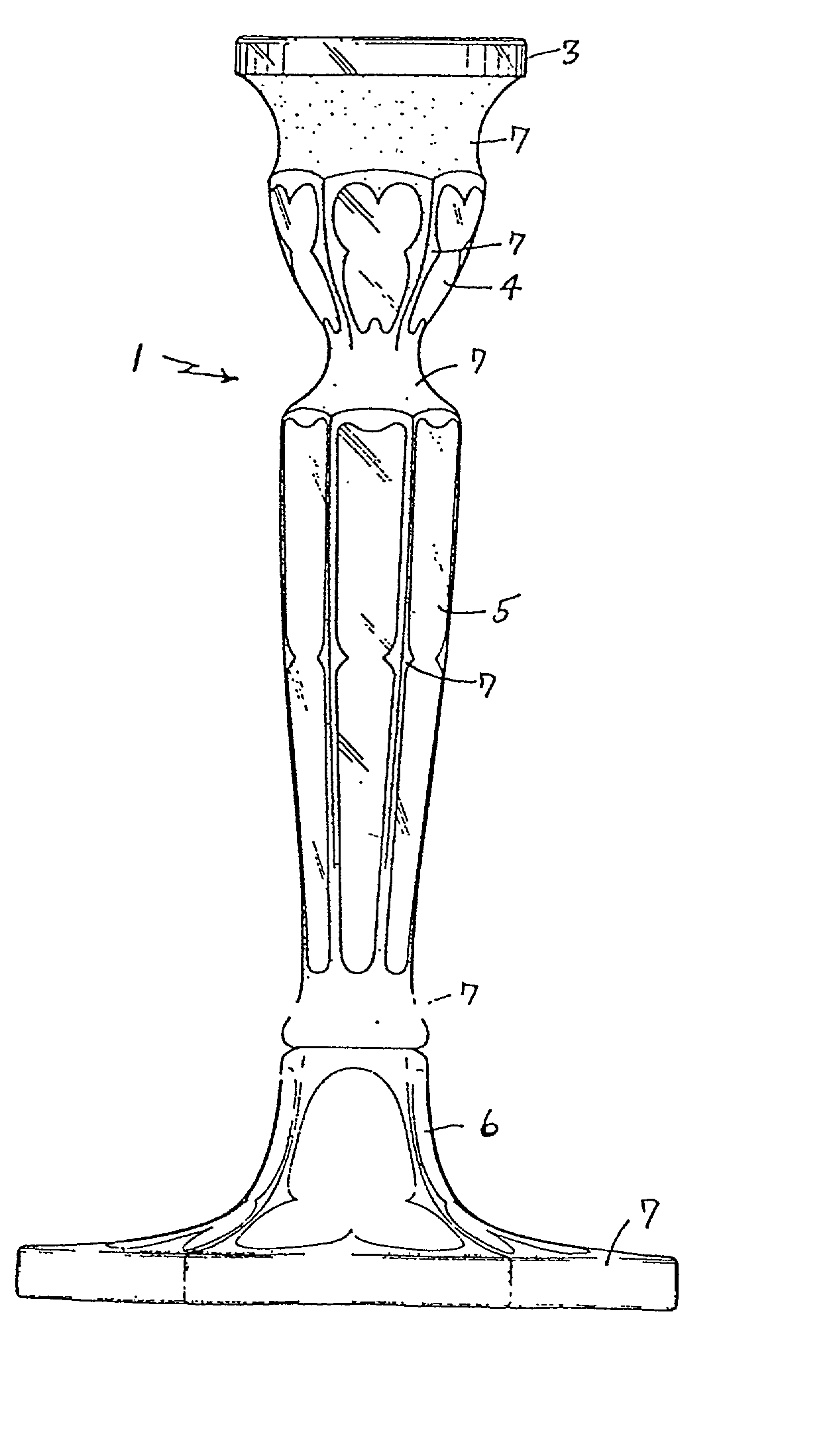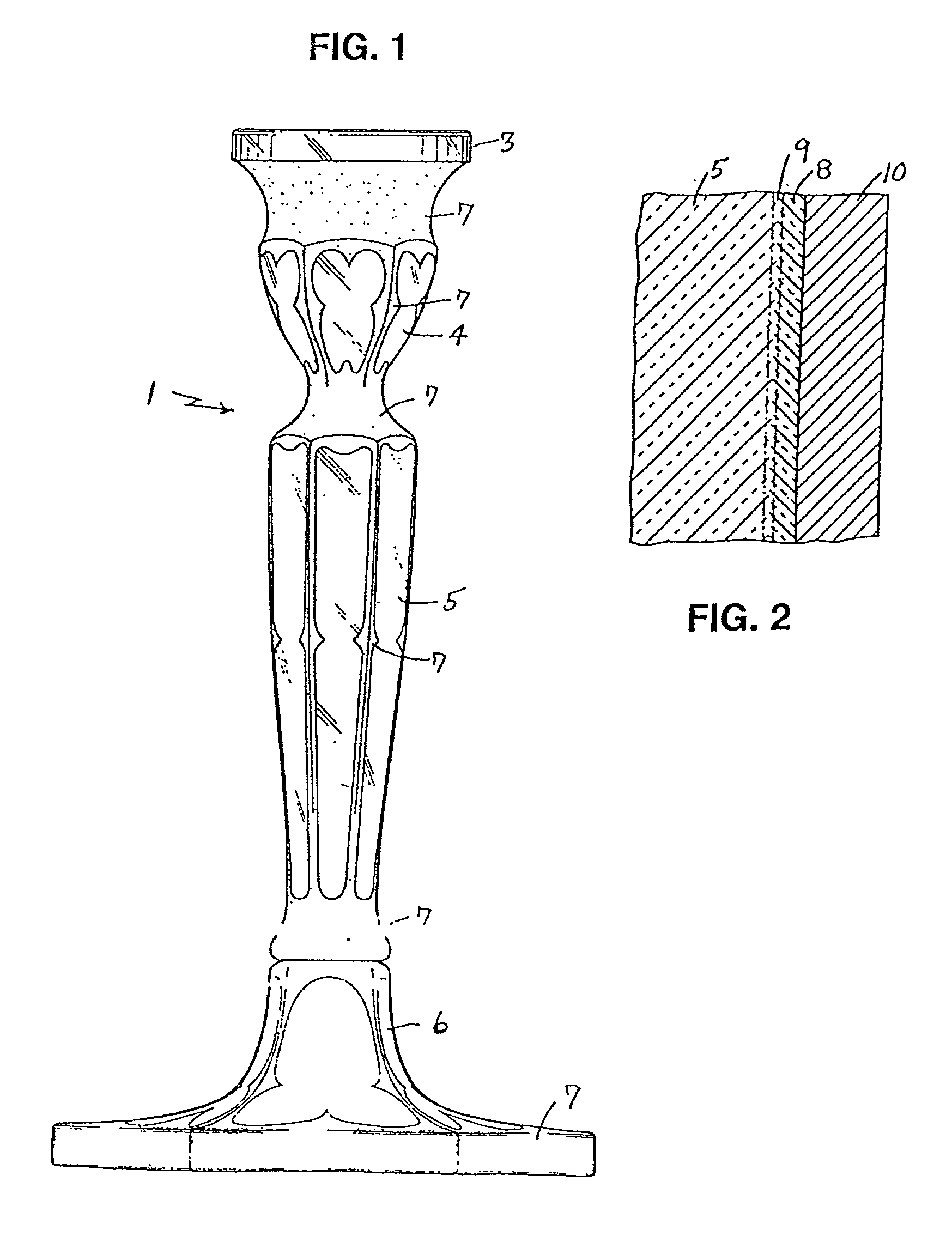Articles with selectively deposited overlay
- Summary
- Abstract
- Description
- Claims
- Application Information
AI Technical Summary
Benefits of technology
Problems solved by technology
Method used
Image
Examples
Embodiment Construction
[0018] The invention is particularly useful for decorating a three-dimensional surface and will be described in connection with the preferred embodiment in which a decorative metal layer is applied to a glass candle stick holder of the type having a flared, multi-angular base, or pedestal, from which a tapered, six sided stem extends upwardly to a candle receiver which is circular in cross-section. Peripheral grooves are between the base and the stem and between the stem and the candle receiver. It will be apparent that decoration must conform to many different surfaces which intersect at various angles. The methods of the invention permits the application of an aesthetic metal pattern to such a candle stick holder.
[0019] The glass candle stick holder 1 shown in FIG. 1 has surface areas 3-6 of bare glass with a decorative pattern of shiny metal areas 7 thereon produced in accordance with the invention.
[0020] FIG. 2 is an enlarged, fragmentary cross-section of a typical layer of meta...
PUM
| Property | Measurement | Unit |
|---|---|---|
| Fraction | aaaaa | aaaaa |
| Percent by volume | aaaaa | aaaaa |
| Mesh size | aaaaa | aaaaa |
Abstract
Description
Claims
Application Information
 Login to View More
Login to View More - R&D
- Intellectual Property
- Life Sciences
- Materials
- Tech Scout
- Unparalleled Data Quality
- Higher Quality Content
- 60% Fewer Hallucinations
Browse by: Latest US Patents, China's latest patents, Technical Efficacy Thesaurus, Application Domain, Technology Topic, Popular Technical Reports.
© 2025 PatSnap. All rights reserved.Legal|Privacy policy|Modern Slavery Act Transparency Statement|Sitemap|About US| Contact US: help@patsnap.com


